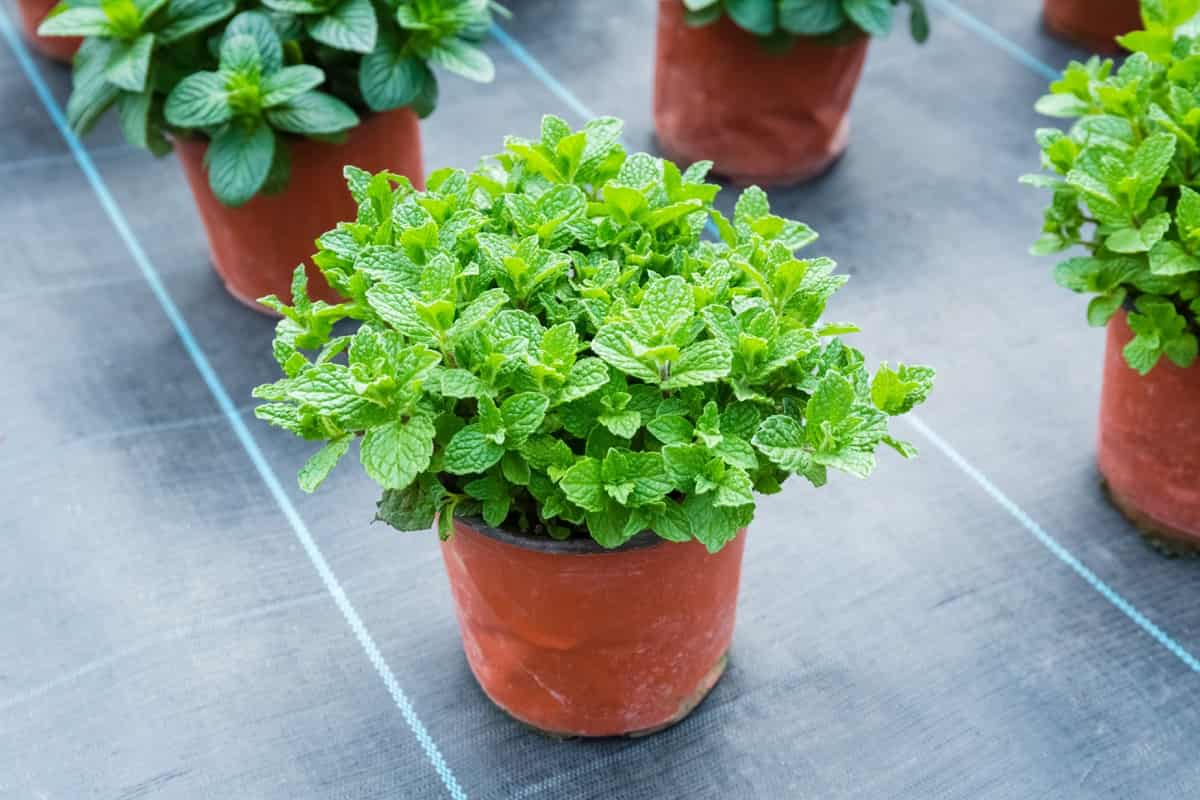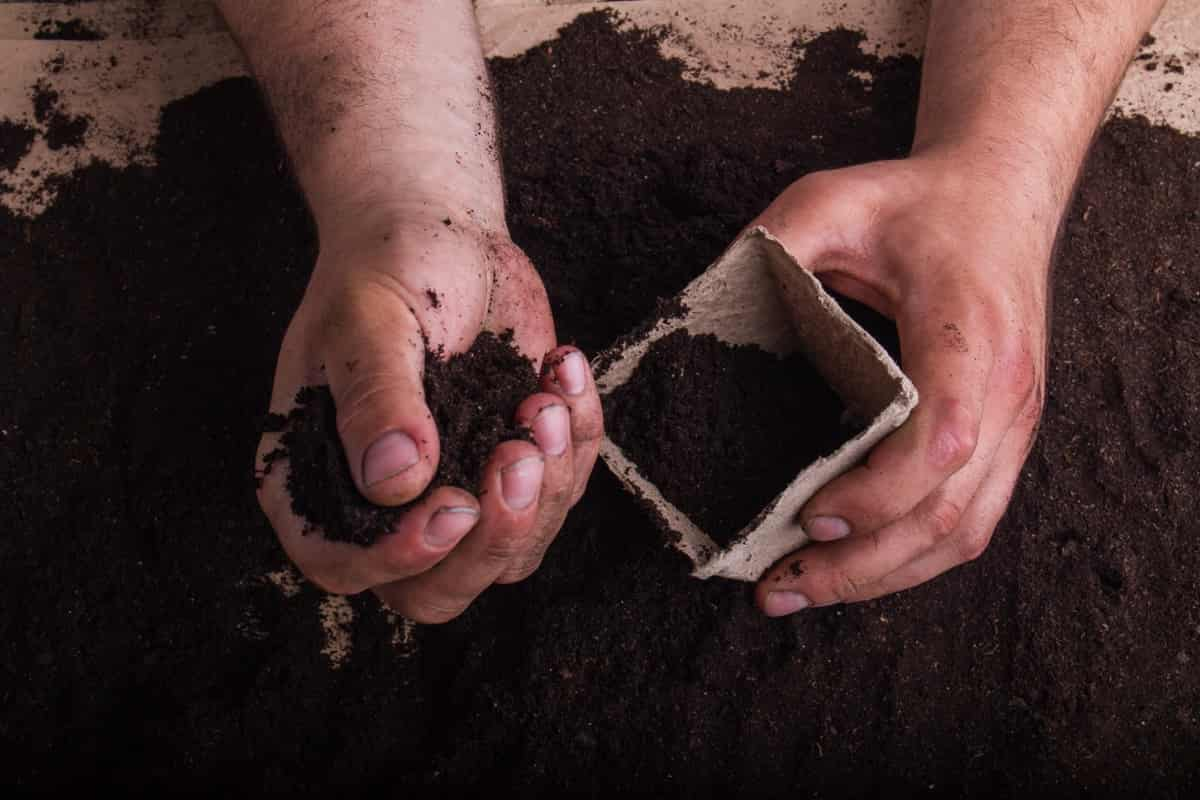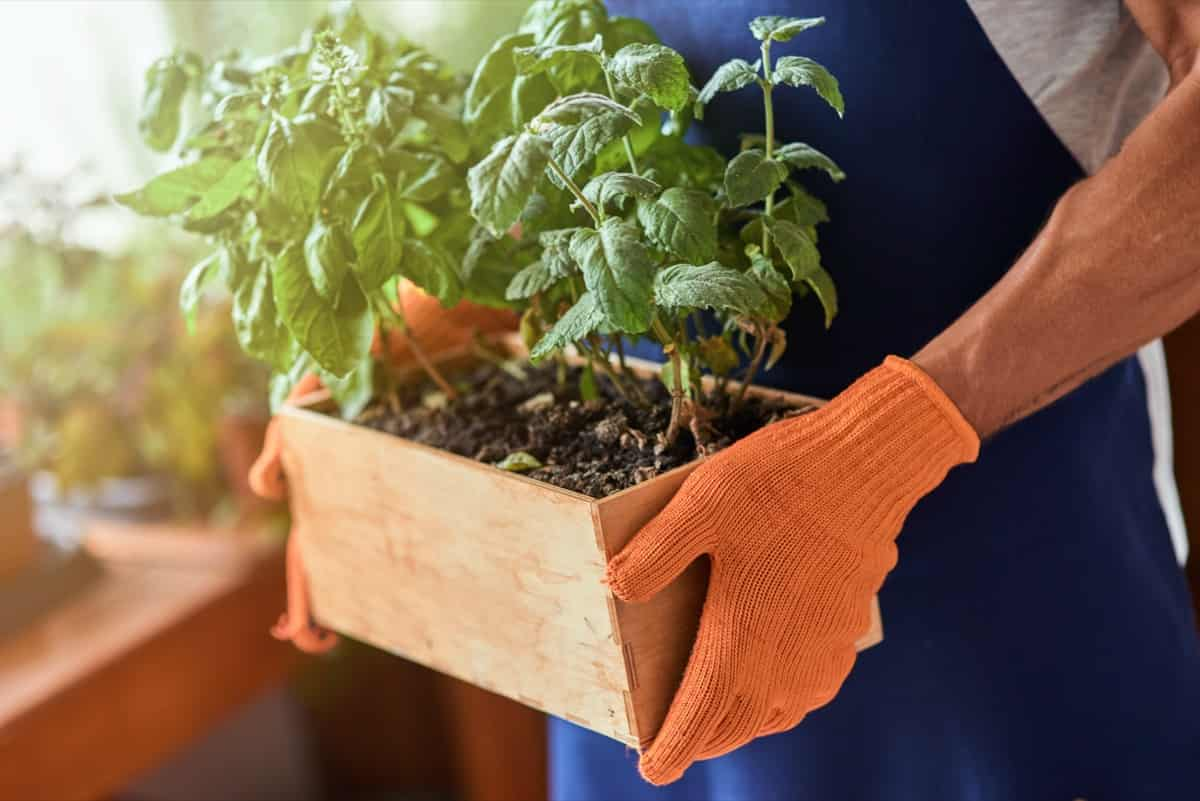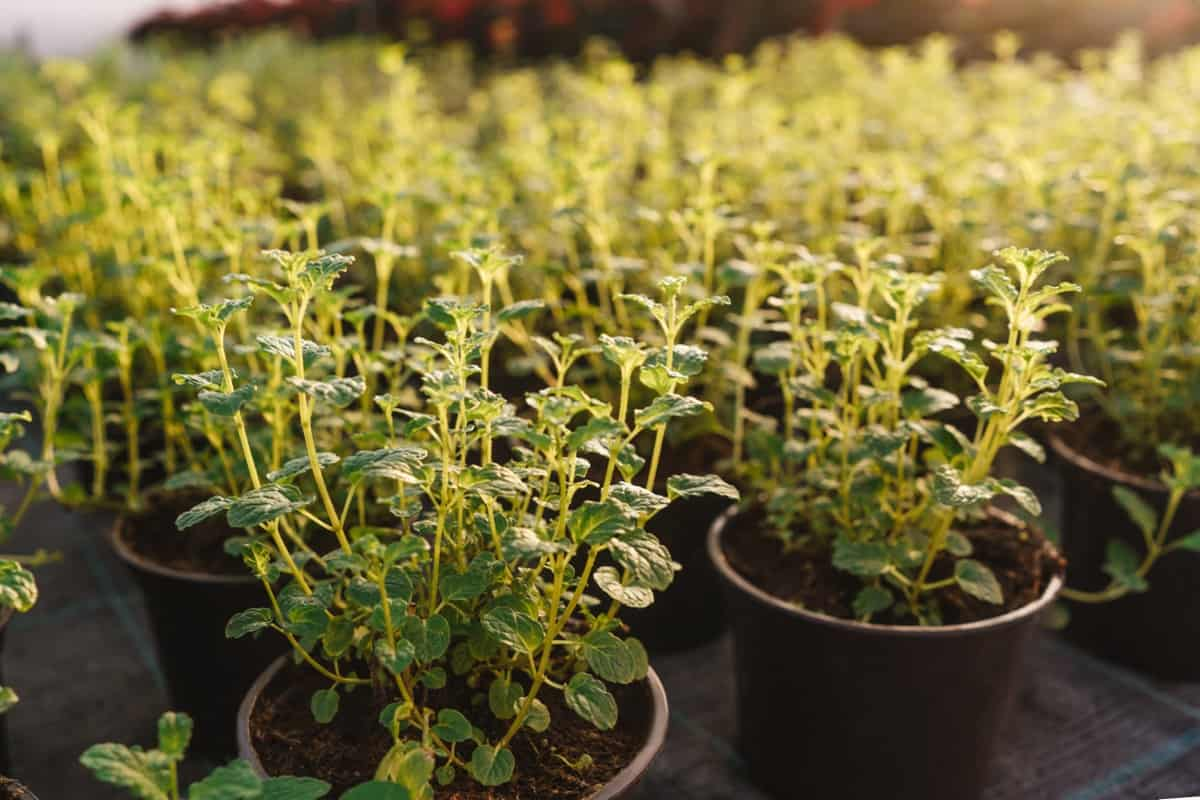Fertilizing potted mint plants is an essential aspect of maintaining their health and ensuring robust growth. Proper nutrition helps mint plants produce abundant leaves with vibrant flavors and fragrances. In this guide, we’ll explore the basics of fertilizing potted mint plants, including the types of fertilizers, when and how to apply them, and other essential tips for successful mint cultivation.

Best Fertilizer for Mint in Pots
Organic Fertilizers for Mint Plants in Pots: Nurturing Your Plants Naturally
- Compost: It is a fantastic organic fertilizer for mint. It enriches the soil with nutrients, improves water retention, and encourages beneficial microorganisms. Mix well-rotted compost into the potting mix or use it as a top dressing.
- Worm Castings: This organic fertilizer is rich in nutrients and beneficial microorganisms. They provide a slow-release source of nutrition for your mint plants. Simply sprinkle a layer of worm castings on the soil surface.
- Fish Emulsion: Fish emulsion is a natural liquid nitrogen fertilizer that mint plants appreciate. Dilute it per the package instructions and water your mint with it every few weeks.
Natural Fertilizers for Mint Plants in Pots: for Environmentally-friendly Options
- Epsom Salt: Epsom salt is an eco-friendly option that supplies magnesium to mint plants. Dissolve one tablespoon of Epsom salt in 4 liters of water and use it to water your mint plants once a month.
- Seaweed Extract: Seaweed extract is derived from seaweed and contains essential minerals and growth-promoting hormones. It’s an eco-friendly option that can be applied as a foliar spray or added to the watering can.
- Coffee Grounds: These can be mixed into the potting soil. They provide organic matter to the soil and can deter pests like slugs. Make sure to let the grounds dry before adding them to the soil to avoid mold issues.
Homemade Fertilizers for Mint Plants in Pots: Diy Solutions for Optimal Plant Health
- Banana Peel Fertilizer: These are rich in potassium, which is beneficial for mint plants. Chop up and bury them in the soil around your mint plant. They release nutrients into the soil while they break down.
- Eggshell Fertilizer: Crushed eggshells are a great source of calcium for mint plants. Rinse the eggshells, crush them, and sprinkle the crushed shells on the soil surface.
- Nettle Tea: Nettle tea is a homemade, nutrient-rich fertilizer. Collect nettle leaves, steep them in water for a few weeks, and then dilute the resulting tea with water before using it to water your mint plants.
In case you missed it: Mint Companion Plants: Plants Grow Best with Mint and Bad Companion Plants for Mint

NPK Ratios and Their Importance in Selecting Fertilizers for Mint Plants in Pots
NPK stands for Nitrogen, Phosphorus, and Potassium, three essential nutrients for plant growth. The ratio of these nutrients in a fertilizer is crucial for mint plants,
- Nitrogen (N): Nitrogen promotes lush, green foliage and overall plant growth. Mint requires a moderate to high level of nitrogen. Look for fertilizers with a higher first number in the NPK ratio (e.g., 10-5-5).
- Phosphorus (P): It is important for root development and flowering. While mint doesn’t need as much phosphorus as nitrogen, a balanced fertilizer with moderate phosphorus (the second number in the NPK ratio) is suitable (e.g., 10-5-5).
- Potassium (K): Potassium aids in disease resistance and overall plant health. Mint plants benefit from a moderate level of potassium. Choose fertilizers with a balanced K value (e.g., 10-5-5).
Slow-release Fertilizers: Enhancing Nutrient Availability for Mint Plants in Pots
- Consistent Nutrient Release: Slow-release fertilizers release nutrients gradually over an extended period, providing a steady supply of nutrients to the mint plants. This helps prevent over-fertilization and reduces the risk of nutrient leaching.
- Reduced Maintenance: Using slow-release fertilizers reduces the frequency of fertilization, which can be especially convenient for potted plants. You won’t have to fertilize as often as with water-soluble fertilizers.
- Minimized Risk of Burn: These fertilizers are less likely to cause root burn, which can occur when high concentrations of nutrients come into direct contact with the plant roots or leaves.
pH Levels and Fertilizer Selection for Mint Plants in Pots: For Balanced Soil Environment
Mint plants prefer a slightly acidic to neutral soil pH level, typically around 6.0 to 7.0. The pH level affects nutrient availability to plants. Here’s how pH levels relate to fertilizer selection,
- Testing pH: Before fertilizing, test the pH of your potting mix. You can use a pH meter or test kit to determine the current pH level.
- Adjusting pH: If the pH is too high (alkaline), you can lower it by adding organic matter like peat moss or using acidifying fertilizers. Conversely, if it’s too low (acidic), you can raise it by adding lime or using alkaline fertilizers.
- Fertilizer pH: Some fertilizers may affect the pH of the soil. Be aware of the pH impact of your chosen fertilizer and how it aligns with your soil’s pH needs.
In case you missed it: How to Grow and Care for Organic Lemon Mint: Guide for Planting to Harvesting

The Importance of Timing: When to Apply Fertilizer to Mint Plants in Pots
Apply a balanced and slow-release fertilizer in early spring, just as new growth emerges. This provides essential nutrients when the plant is actively growing. Avoid fertilizing during late summer or fall, as mint starts dormant. Over-fertilizing can lead to excessive growth and dilute flavor. Additionally, monitor the plant’s condition; if it shows signs of nutrient deficiency, like yellowing leaves, consider a light mid-season feeding. Proper timing ensures optimal mint health and flavor for your culinary endeavors.
How to Apply Fertilizer to Mint Plants in Pots: Techniques for Maximum Effectiveness
- Dilution: Follow the manufacturer’s instructions for diluting the fertilizer. It’s usually best to use a weaker solution than recommended on the label to prevent over-fertilization, which can harm your mint plants.
- Frequency: Apply fertilizer every 4-6 weeks during the growing season. Avoid fertilizing during times of extreme heat or drought, as this can stress the plants.
- Apply to Moist Soil: Water the mint plants thoroughly a day or two before applying fertilizer. Applying fertilizer to dry soil can potentially burn the roots. The soil should be moist but not waterlogged.
- Even Distribution: Apply the diluted fertilizer evenly over the soil surface around the base of the mint plant. Avoid direct contact with the foliage, which can cause burning or damage.
Water-soluble Fertilizers for Potted Mint Plants
- All-Purpose Liquid Fertilizer: These often come in balanced formulations like 10-5-5 or 20-10-10. They are versatile and suitable for most mint varieties.
- Organic Liquid Fertilizer: If you prefer organic options, look for liquid fertilizers made from natural sources like fish emulsion, kelp, or compost tea.
- Slow-release Granular Fertilizer: While not water-soluble, slow-release granular fertilizers can be applied at the start of the growing season. They release nutrients gradually over time, reducing the need for frequent fertilization.
Table for Fertilizing Potted Mint Plants: Organic, Natural, Homemade, NPK Ratio And When to Apply
| Type of Fertilizer | Fertilizer | When to Apply |
| Organic | Compost, Worm casting, Fish Emulsion | Spring and Fall |
| Natural | Epsom salt, Seaweed Extract | As side dressing |
| Homemade | Banana Peels, Nettle Tea | As side dressing |
| NPK ratio | 10-5-5 or 20-10-10 | Three splits/ season |
| Water soluble | Blood meal, Compost Tea | During growing season |
| Slow release | As spikes available in the market | During growing season |
In case you missed it: Homemade Mint Spray for Pest and Disease Control: Recipe for Natural and Organic Benefits of Plants

Conclusion
Remember that mint can be invasive, so it’s often a good idea to keep it in pots to prevent it from taking over your garden. Proper fertilization will help ensure that your potted mint plants remain healthy and productive.
- Feed Your Flock for Less: Top 10 Tips to Save on Chicken Feed
- Ultimate Guide to Ossabaw Island Hog: Breeding, Raising, Diet, and Care
- Hatching Answers: The Top 10 Reasons Your Chickens Aren’t Laying Eggs
- Eggs and Economics: Breaking Down the Cost of Raising Backyard Chickens
- Defend Your Greens: Proven Methods to Keep Iguanas Out of Your Garden
- Ultimate Guide to Cinnamon Queen Chicken: A Comprehensive Guide for Beginners
- Ultimate Guide to California Tan Chicken: Breeding, Raising, Diet, Egg-Production and Care
- Ultimate Guide to Marsh Daisy Chicken: Breeding, Raising, Diet, and Care
- 10 Types of Chicken Farming Businesses You Can Start for Profits